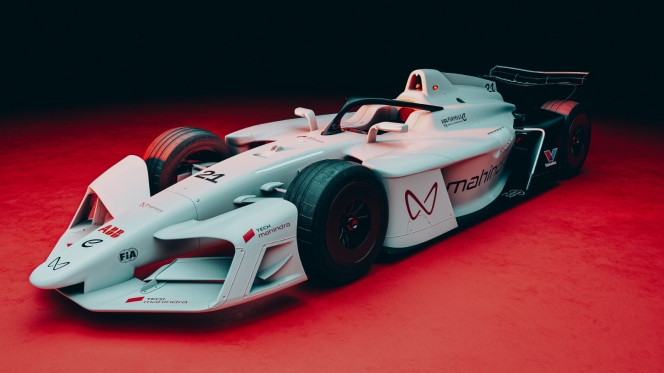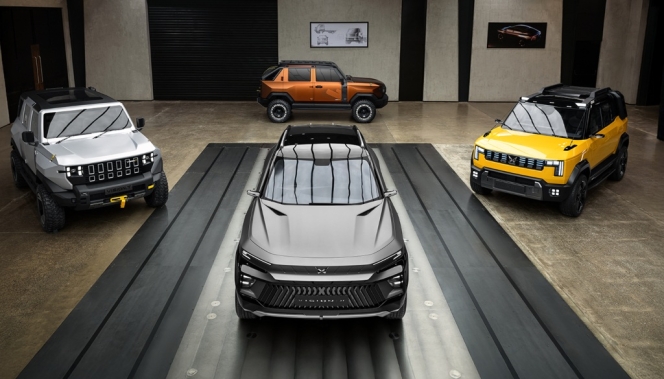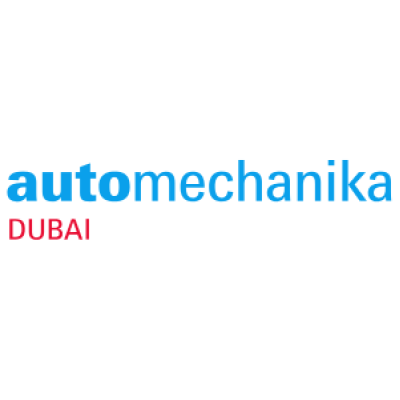AAAA Is Positive On Growth Outlook Over The Next Five Years
- By T Murrali
- December 19, 2020

Q: Did your members face any challenges during the COVID? Elaborate.
Charity: As the pandemic started to impact Australia in February, our members initially faced the uncertainties of the virus itself and how that would affect their businesses, customers, employees, and the economy. State and Territory Governments then started imposing various levels of restrictions on people movement and trade. This affected (to varying degrees) large portions of manufacturing, distribution, retail, and automotive service and repair across the country.
Our members then faced the challenge of interpreting hastily constructed and not always coherent new regulations and sought answers to whether they could remain open, and if so to what degree.
Businesses also had to navigate the various Government assistance options available, make difficult decisions around staff, faced the loss of revenue and customers and worried about the short-term survival of their businesses.
Following a national lockdown from March through to May, Australia regained control of infection numbers, and once restrictions started easing businesses exhibited substantial recoveries. However, the state of Victoria (the second largest in Australia) was hit with a second, much larger COVID-19 wave in June. The Victorian Government responded by imposing a hard lockdown of metropolitan Melbourne which ran from July until the end of October. It is only now that restrictions are slowly being wound back, that Melbourne based businesses can start their process of recovery.
Q: What are the learnings for AAAA from the pandemic and how the association supported its members during this time?
Charity: We were proactive in our approach to the pandemic, but of course no one was fully prepared for how events would turn out and the scale of the impact on our economy.
As the first wave hit, we received an unprecedented influx of members and the broader industry who turned to the AAAA seeking information and assistance. Our primary role was to influence and interpret Government regulations and support offerings and provide clear and timely information to our members. Regular, accurate updates assisted our members in making the best decisions and receiving the Government support they needed.
Due to the high level of demand for this information, we had to adapt and further strengthen our communication methods quickly. We added online webinars to our repertoire of communication channels to provide information to as many people as possible. Webinars provided the additional benefit of allowing direct, live member Q&A sessions.
Members had direct access to our advocacy team during the crisis, and the team were inundated with individual requests and queries asking for advice concerning the pandemic, the Government response and their particular situation.
We were successful in lobbying Government to classify automotive repair as an essential service. As a result, the majority of our industry stayed open throughout the year, and we have lost very few staff from the industry, which is a remarkable achievement.
The innovation that was displayed right across the sector was inspiring-mechanical workshops implemented contactless drop-off and pick up systems, adopted SMS and digital communications to inform their customers that they were still open and implemented a range of process changes to ensure the safety of their staff and customers.
Our parts supply chains had to deal with working from home arrangements, scaled back staffing in distribution centres and a whole range of logistical challenges to ensure the trade had the right part, at the right time for the right price.
Automotive retailing also held up remarkably well right throughout the year as people with disposable income and extra time worked on their cars.
We also learned how resilient our industry is. Despite the challenges, we saw incredible resolve, determination and support across the industry and ‘being in this together’ unified everyone toward common goals, putting aside competitive rivalries for the greater good.
Q: How are online sales in the automotive parts retail segment evolving in Australia?
Charity: While online sales of automotive parts and accessories have grown over the past five years due to the strong consumer uptake of online shopping in general, they still make up less than five percent of the overall market. The diversity of the Australian car parc and the need to ensure parts meet exact specifications means that many consumers and trade customers still buy from traditional bricks-and-mortar retailers and resellers. Having said that, outside of the online marketplaces such as e-Bay, the majority of online sales are through the large traditional retail groups such as Supercheap Auto, Bapcor (Autobarn/AutoPro) and GPC (Repco/Sparesbox). While Amazon attempted a major push into online retailing of automotive parts and accessories several years back, they have not been able to gain significant market share from the established online retailers.

Q: What is the role played by AAAA whenever issues crop between nations on Tariff etc.? Is there any impact on imports of aftermarket products from China?
Charity: We take a proactive approach to address any tariff issues that arise from time to time that have the potential to impact on our membership. An example of this was in 2019 when the Trump administration was considering imposing a Tariff of 25 percent on automotive products exported into the USA based on national security grounds (section 232). The USA is our largest export market.
We were able to lobby for our Department of Foreign Affairs and Trade to engage with their US State Department counterparts to advocate for Australia’s interests with the US Administration. This involved direct representations by Australia’s Foreign Affairs Minister as well as our Ambassador to the USA to put the position that the products that the Australian industry supply into the USA complement rather than compete with US manufacturers. Ultimately the Trump administration did not proceed with the Tariff.
We have not experienced any issues with the import of aftermarket products from China other than some isolated supply issues earlier in the year as a result of the impact of the COVID-19 on China’s manufacturing sector.
Q: The connected vehicle is a boon for the users; how is it for the aftermarket industry?
Charity: Similar to other new technologies, connected vehicles present new opportunities for the aftermarket; however, at the same time, challenges have presented themselves. Over the years as vehicles include more and more electronics, both hardware and software, it has made it more difficult for independent service and repair workshops to access software updates and repair and service information from car manufacturers. This has a flow-on effect on their ability to compete with dealerships on fair and reasonable terms in servicing and repair of vehicles. We have campaigned for over ten years to have a law implemented that compels the manufacturers to share this data. In great news, a mandatory data sharing law will be introduced in Australia in 2021, which will force all car companies to share all repair and service information with all repairers on fair and reasonable commercial terms.
Despite the advances in the connected car, the fundamentals of vehicles have not changed. Components need service and repair, and vehicles remain open to all manner of modifications and customisation. In Australia, changing government regulations can impose challenges regarding the modification of vehicles; however, we have a constructive dialogue with regulators to ensure our members can continue to offer safe accessories and modifications for vehicle owners.
Q: What percentage of sales in Australia account for electric vehicles? What is the current EV parc? How does AAAA support its members in catering to the requirements of these new breed vehicles?
Charity: Electric vehicles continue to gain some popularity with sales volumes increasing year on year; however, they remain a tiny part of the Australian car parc. Electric vehicles account for only about 0.6 percent of the Australian market currently. Sentiment wise, consumers are more receptive towards owning an EV vehicle than five years ago. The main challenges we face are the lack of EV charging infrastructure and the vast distances involved in Australian road networks, as well as the price of EV’s compared to the equivalent internal combustion engine model. We don’t foresee any sizeable shift in the change to the car parc in relation to EV’s for at least another ten years.
At an AAAA-member support level, we are beginning to host information and training evenings that focus on EV safety and specific servicing requirements and monitor any changes in the car parc or Government regulations around EV’s that may have an impact on the industry.
 Q: Can you briefly tell us about your initiatives in building professional skills to your members?
Q: Can you briefly tell us about your initiatives in building professional skills to your members?
Charity: One of the core principles of the AAAA is to ensure member sustainability and foster member growth, with skills development an important component of this.
At Government level, we support and advocate for issues around skills and training. In Australia, there is a shortage of skilled labour, and our industry needs more apprentices to choose automotive as a career. Along with Government advocacy on these issues, we are increasing our work on strategies at an industry level to drive new apprenticeship levels and interest in what is a fantastic and diverse industry.
AAAA members are exposed to regular AAAA training and networking evenings, designed to educate and build skills of those in our industry. Our member webinars are often themed toward skills development with topics including local area marketing, cash flow and business efficiency.
We also provide business development tools and services to members. This includes access to our advocacy team, market research, including our Car Parc Data tool and Workshop Health Check, and hotlines for human resource and legal matters.
Q: Can you update on the “Automotive Innovation Labs” that AAAA established in Victoria and South Australia a couple of years ago?
Charity: The Auto Innovation Centre (AIC) is just about to celebrate its first birthday in Victoria, while the facility in South Australia is close to being opened. The Melbourne facility contains cutting-edge testing and scanning equipment, workshop facilities and other manufacturing and development capabilities for our industry to utilise, plus a fleet of new vehicles for product development.
The AIC is already the go-to facility for many Australian businesses seeking assistance with product development thanks to its unique capabilities. The AIC conducts regular Electronic Stability Control and Brake Testing to ensure products such as suspension and braking systems meet Australian Design Rules. 3D Scanning is another popular service offering, with a soon to be launched database of vehicle scan data available to subscribers. The AIC also hosts businesses that run training, networking and information evenings and the fully equipped workshop is used by companies for product fitting sessions using the AIC vehicle fleet.
Q: What is your outlook for the growth of the aftermarket in the next five years?
Charity: We are very positive about the growth outlook in the aftermarket over the next five years as all the key drivers that we look at to assess future demand in our industry is positive. These include:
The fact that Australians are still very reluctant to use public transport like they did in the past which has driven up the price of second-hand cars as families buy a second or even third car to ensure they can get to where they need to be without relying on transport.
New car sales that had already experienced two consecutive years of month-on-month declines have been decimated this year. This will drive up the average age of vehicles meaning that a greater proportion of vehicles will and are being serviced in the independent aftermarket.
With many interstate borders still closed and international borders shut for the foreseeable future, we are seeing the return of the family road trip which has seen a massive boom in the sales of 4WD accessories and vehicle modification services.
To further support these market dynamics, the imminent introduction of a national mandatory data-sharing law will lay the foundation for further strengthening of the independent service and repair sector moving forward.
So while 2020 is a year that we’d all rather forget, we are experiencing strong demand for our products and services across all segments of the aftermarket and we are projecting this to be sustained over the next five years. (MT)
- Hagerty UK
- Vehicle Excise Duty Exemption
- VED Exemption
- Historic & Classic Vehicles Alliance
- Classic Cars
UK Chancellor Maintains Vehicle Excise Duty Exemption For Classic Cars
- By MT Bureau
- November 27, 2025

The UK's cherished classic car community can finally breathe a collective sigh of relief. The decisive action by Chancellor Rachel Reeves in the Autumn Budget to maintain the Vehicle Excise Duty (VED) exemption for vehicles over 40 years old has ended a prolonged period of uncertainty, securing a stable future for this vital sector. Mark Roper, Managing Director of Hagerty UK, welcomed this clarity, noting that the confirmed freeze on fuel duty further solidifies a supportive environment for owners. He underscores that this is a significant win for the GBP-7.3-billion industry that supports over 100,000 jobs and contributes GBP 3 billion annually to the UK economy, all while championing an inherently sustainable form of motoring.
This perspective on sustainability is reinforced by Dale Keller, CEO of the Historic & Classic Vehicles Alliance (HCVA), who affirms that the tax exemption logically aligns with environmental objectives. Classic vehicles, preserved as moving heritage, have a negligible lifecycle carbon footprint compared to new manufacturing and are driven infrequently. The original principle of the exemption remains valid, as applying a modern tax to these rarely used assets would be inequitable.
Alongside the VED news, the Chancellor confirmed the continuation of the MOT exemption for classic cars, though this will remain under review. On this point, Roper of Hagerty UK strikes a note of caution, observing that many within the industry advocate for an annual roadworthiness check. He notes that a great number of responsible classic owners voluntarily submit their vehicles for an MOT each year, valuing the independent assurance of safety and mechanical integrity it provides.
For Hagerty UK, as a specialist insurer deeply embedded in this world, the government’s affirmation is a powerful endorsement of the sector's cultural and economic value. Through its vibrant Clubhouse at Bicester Heritage and unique events like RADwood, Hagerty is actively fostering this passionate community. Similarly, the HCVA continues its mission to protect and promote the diverse ecosystem of specialists, restorers and businesses that form the backbone of this multi-billion-pound industry, ensuring its legacy for generations to come.
Mahindra Racing Extends Formula E Involvement With GEN4 Manufacturer Commitment
- By MT Bureau
- November 26, 2025

Mahindra Racing has solidified its long-term future in electric motorsport by confirming its manufacturer commitment to the GEN4 era of the ABB FIA Formula E World Championship, starting in 2026/27. This announcement, made during the unveiling of its new M12Electro race car in India, extends a relationship that began in 2013 when Mahindra stood as both a founding team and the first OEM to join the all-electric series.
The team's current trajectory underscores the significance of this pledge. Following a dramatic 18-month transformation under CEO and Team Principal Frederic Bertrand, Mahindra Racing has evolved from a backmarker into a consistent front-runner. This resurgence was powered by the redesigned M11Electro, in which drivers Nyck de Vries and Edoardo Mortara collectively secured five podium finishes in Season 11, catapulting the squad to a stellar fourth place in the world championship. The newly launched M12Electro is the intended vehicle to maintain this status as a top-five contender and a regular threat for podium positions in the forthcoming season.
The technical landscape for GEN4 promises to further electrify the sport. The next-generation cars will boast a peak race power of 450 kw, with a potent 600 kw available in ATTACK MODE to empower aggressive overtaking. Enhanced strategic possibilities will come from a race energy capacity of up to 55 kWh and a remarkable 700 kw of regenerative braking. In a continued commitment to sustainability, the GEN4 chassis will be produced from 100 percent recyclable materials and will feature two distinct aerodynamic configurations – high-downforce for qualifying and low-downforce for races – to optimise performance.
Mahindra's ambition is to leverage this new regulatory chapter to build on its renewed momentum, chase incremental gains and establish itself as a confirmed championship contender against elite manufacturers like Porsche and Jaguar. This competitive platform also serves a broader purpose, aligning with the Mahindra Group’s sustainability initiatives. The team, the first in Formula E to earn the FIA’s Three-Star Sustainability Accreditation, has embarked on its ‘Planet Positive’ programme. This initiative is dedicated to driving positive impact in communities and economies, accelerating climate solutions and using the intersection of sport and technology as a catalyst for a better future.
R Velusamy, Chairman, Mahindra Racing, said, "Mahindra Racing has always been a symbol of our commitment to the Race to Road journey – where cutting-edge innovation on the track directly shapes the clean, intelligent and high-performance mobility solutions we deliver to customers. Formula E is a powerful platform for innovating new technology, giving us the ability to experiment, learn and advance electric powertrain efficiency, sustainable materials and software intelligence. As we step into the GEN4 era, our ambition only grows stronger. Continuing this journey till 2030 is a testament to our belief in the sport, in electrification and in India’s role in leading global sustainable mobility. We are proud to champion this future, and GEN4 represents an exciting new chapter for Mahindra Racing and the Mahindra Group.”
Frederic Bertrand, Team Principal, Mahindra Racing, said, “I’m delighted to share this announcement that Mahindra Racing will remain in Formula E as a manufacturer for the GEN4 era. As a team, we have been on a fantastic journey over the past two seasons. What we have built and achieved as a group has been exceptional, and with this announcement, we now have the platform to keep growing and developing and achieve even greater success in the future. None of this would be possible without our colleagues across the Mahindra Group. They have bought into the project and the vision, and we will keep working hard to not only make India proud but also showcase exactly why it has the potential to be a major player on the world stage in the automotive and technology industries. Their enthusiasm to ‘Scream Electric’ is hugely inspiring to the whole team, and we will continue to represent them with pride in this next exciting chapter of our Formula E story in the coming years.”
Jeff Dodds, CEO, Formula E, said, “We’re thrilled to confirm Mahindra’s long-term commitment to the GEN4 era of the ABB FIA Formula E World Championship. As one of our founding teams, Mahindra has been with us since the very beginning, consistently championing electric racing and innovation. Their bold vision for sustainable mobility and continued investment in advanced EV technology perfectly align with Formula E’s mission. Mahindra’s enduring presence not only strengthens our position in a key market but also reinforces Formula E’s role as a global platform for driving positive change. We’re excited to see what they’ll achieve in this next chapter of performance and progress.”
Marek Nawarecki, Senior Circuit Sport Director, FIA, said, “Following the GEN4 reveal and the really positive sentiment reported, we are pleased to announce Mahindra as the sixth manufacturer to commit to Formula E’s GEN4 era. This is testament to the relevance of the road map we are implementing in Formula E for OEMs. GEN4 underscores just how far the ABB FIA Formula E World Championship has come since 2014 and we are looking forward to continuing this journey with Mahindra as one of the founding teams and partners.”
Mahindra Charts Aggressive Decade Of Growth Across Auto, Farm, CV And Last-Mile Mobility Businesses
- By MT Bureau
- November 21, 2025

Mumbai-headquartered conglomerate Mahindra Group has unveiled an ambitious long-term roadmap across its core mobility and equipment businesses, detailing plans for accelerated growth in the automotive, farm equipment, commercial vehicle and last-mile mobility segments.
The strategy, presented at its Investor Day 2025, underscores the Group’s intent to leverage India’s expanding economy while deepening global market participation.
Mahindra expects its consolidated automotive business to grow 8x between FY2020 and FY2030, driven primarily by a stronger push in sports utility vehicles (SUVs) and light commercial vehicles (LCVs).
The company aims to become the world’s fastest-growing SUV brand. Its product strategy is rooted in new-age platforms such as INGLO and NU_IQ, enhanced digital architecture under MAIA and Adrenox, and continued investment in safety and performance.
At present, Mahindra holds more than 26 percent revenue share in India’s SUV segment as of the first half of FY2026. Strong consumer traction for models including the Thar, XUV700, XUV3XO and the Born Electric (BE) series is expected to support the company’s international expansion to right-hand-drive and left-hand-drive markets across Europe, Australia, Africa and other regions.
Strengthening leadership in LCV segment
The LCV business, where Mahindra commands 54.1 percent volume share in vehicles under 3.5 tonnes (as of H1 FY2026), is set to be another pillar of growth. The product range has broadened through the Supro, MaXX and Veero platforms, including CNG and electric variants. The company is also preparing for wider adoption of lifestyle pickups, led by the upcoming Global Pik Up.
Mahindra’s LCV strategy emphasises best-in-class total cost of ownership, reduced downtime, enhanced comfort and technology integration, with the segment also targeted for eightfold revenue growth during the decade.
Farm business
Mahindra, the world’s largest tractor manufacturer by volume, has outlined plans for threefold revenue growth in its farm equipment division between FY2020 and FY2030.
The Indian tractor market has continued to shift towards higher horsepower models, particularly in the 40–50 HP range. Mahindra aims to consolidate share in this segment through newer platforms including Yuvo Tech+, Swaraj Protek and Next-Gen ranges. Improvements in crop profitability and a more favourable price environment for tractors are expected to support industry expansion.
Mechanisation levels in India remain uneven, with significant headroom in sowing, crop care and harvesting equipment. Mahindra is expanding its farm machinery portfolio while leveraging its extensive dealer network and manufacturing footprint. The division, already a business exceeding INR 10 billion, is poised for rapid scaling.
Mahindra continues to build presence in key global markets:
- Brazil: 8 percent share in the sub-120 HP category, and about 20 percent in sub-50 HP
- North America: more than 10 percent share in sub-20 HP; upcoming launches to deepen penetration
- ASEAN: early progress with about 4 percent share in pilot territories
Electrification, autonomy, precision agriculture and pay-per-use technology services form the next frontier for Mahindra’s farm business.
Targeting Top-Three Position in ILCVs
Following the acquisition of SML Isuzu, Mahindra is advancing a strategy to be among the top-three player in India’s intermediate and light commercial vehicle (ILCV) market. The domestic CV industry is projected to grow from approximately INR 15,000 billion in FY2025 to nearly INR 20,000 billion by FY2031, supported by infrastructure development, logistics modernisation and GST-driven reforms.
Mahindra aims to expand its presence in ILCVs, while pursuing a selective play in the heavy commercial vehicle category. The strategy benefits from combined advantages across product development, sourcing, aggregates, telematics and network coverage. The company expects up to sixfold revenue growth in its CV business during the decade.
Last-Mile Mobility
Mahindra Last Mile Mobility (MLM) is shaping an aggressive electrification-led growth plan, targeting sixfold revenue expansion and a cumulative one million electric vehicles on the road by 2031. EV sales climbed to 78,678 units in FY2025, led by the Treo series, which remains India’s top-selling electric three-wheeler.
The division has:
- Strengthened its engineering capabilities with a 400-member product development team
- Commissioned a new state-of-the-art manufacturing plant in Telangana
- Expanded production capacity two-fold
- Developed proprietary battery, motor and telematics systems
The product roadmap includes advanced electric three-wheelers and electric four-wheelers tailored for last-mile applications, along with plans to expand exports to more than ten markets. Mahindra’s EV fleet has cumulatively saved over 300 million litres of fuel and prevented more than 185 kilo tonnes of carbon dioxide emissions.
Across all mobility segments, Mahindra’s plan is anchored in product leadership, technology integration, capital discipline and global expansion. A stronger focus on electrification, platform consolidation, digital interfaces, manufacturing efficiency and customer-centric service models is expected to underpin the Group’s growth trajectory.
- Murugappa Group
- Arunachalam Vellayan
- Coromandel International
- EID Parry
- EXIM Bank
- Kanoria Chemicals & Industries
- Indian Overseas Bank
Murugappa Group’s Former Chairman Arunachalam Vellayan Passes Away At 72
- By MT Bureau
- November 18, 2025

Chennai-based conglomerate Murugappa Group has announced the passing of Arunachalam Vellayan (1953–2025) following an illness.
Vellayan was the Chairman Emeritus of Coromandel International and the Former Chairman of the Murugappa Group. He is survived by his wife, Lalitha Vellayan, his sons, Arun Vellayan and Narayanan Vellayan, and his grandchildren.
The Former Chairman dedicated several decades to the Group, providing strategic direction across its businesses. His approach to value creation helped strengthen and expand the Group, contributing to its reputation as a respected conglomerate.
He served on the Boards of various Murugappa Group companies, including as Chairman of Coromandel International and EID Parry.
Outside the Group, he served on the Boards of entities such as Kanoria Chemicals & Industries, EXIM Bank and Indian Overseas Bank.






Comments (0)
ADD COMMENT